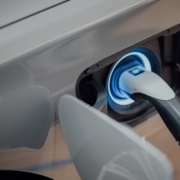The EV Challenge: Brand Loyalty Is More Than Trial
Let’s discuss brand loyalty.
It used to be a principle of marketing that a brand needed trial and repeat before you had brand loyalty. In fact, at the haven of marketing, P&G, the concept was three tries before you could feel comfortable that a customer had become a loyal customer.
And, this makes sense. Brand loyalty is purchase behavior based on actual preference for the brand. Brand loyalty is behavioral and attitudinal commitment over time. Brand Loyalty is based on customer conviction that this one brand is the superior alternative for satisfying a particular want in a particular occasion.
More than just repeat behavior, brand loyalty is like a ladder. There are degrees of commitment to the brand. A marketer’s goal is to move a customer up the loyalty ladder from commodity consideration to short-list brands to preference and, ultimately, to true brand loyalty. It is rare, even with durable goods products, to have true brand loyalty or even preference after one trial. Of course, it is possible, but loyalty, which includes a trust factor, is earned over time. And, in new categories, such as electric vehicles (EVs), where there is learning and where there are many new options across many brands, trial can be expected.
However, somehow, this idea of building brand loyalty is being tragically tossed into the trash. This is a huge mistake. Not a good omen for brand owners.
This is why The Wall Street Journal story titled, “With New EVs Arriving, Brand Loyalty Goes Out The Window” is so unfortunate. The article’s premise is that drivers of EVs have been switching brands. It turns out that first time EV buyers who are now looking for a replacement are selecting from a different brand.
So? This does not mean that brand loyalty is dead or “going out window.” It may mean that the driver was not “loyal” in the first place. It may be that when the first EV was purchased, the selection was limited so the driver opted for what was available. Or, as in the case of the Chevy Bolt, the model was recalled and sales halted due to battery fires.
The Wall Street Journal did point out in a subsequent story that there is a lot of “jockeying” happening among the auto brands. The hope is to attract those early EV adopters. Ford CEO Jim Farley said he hoped that this activity in EV would throw all brand preferences up into the air. Clearly, he is hoping that drivers move away from Tesla.
Data cited from Edmunds indicates that 80% of people who bought a Kia EV6 early this year have traded in that vehicle for another brand. Perhaps the Kia EV6 did not live up to expectations. Bloomberg’s Green Rating put the KiaEV6 below many other EV brands. To turn over a vehicle within a year means that the brand probably did not deliver on its promise or had “issues” with maintenance. Or that a competitive brand appears very attractive.
Other Edmunds data show that people who purchased a Ford Mustang Mach-E traded in a non-Ford vehicle. OK, so perhaps that driver really craved an electric Mustang. A Mustang is an iconic vehicle. The data cited do not indicate whether the trade-ins for EV Mustangs were electric or hybrid or gasoline powered. People wanted the Mach-E.
JD Power research among 2000 car shoppers revealed that “only 3 in 10 customers were able to find an EV that works for them in terms of price, vehicle type and other factors.” For example, General Motors introduced the pricey EV Hummer and the EV Cadillac Lyriq SUV. Neither did much for GM’s bottom line nor for its expertise in EVs. The EV Hummer sold 854 vehicles. The much-hyped Lyriq sold 122 vehicles.
One customer interviewed told The Wall Street Journal that he was a Chevy Volt plug-in hybrid owner who wanted to trade in his 10-year-old vehicle. He said that he had once owned a VW so he looked at the ID.4 from Volkswagen and he looked at the Kia EV6. He found it difficult to find either vehicle so he purchased a Hyundai Ioniq 5. He said, “I was definitely still partial to Volkswagen, but Hyundai won me over. I love it.” He also indicated that “if all things went well” he might consider buying a Hyundai for his next purchase.
Why is this brand loyalty going out the window? This is the opportunity to build brand loyalty.
What The Wall Street Journal gets correct is that in this relatively new category with options beyond just Tesla, drivers are shopping around. Yes, drivers are learning the category. And, yes, drivers are trading in their current models which may not be the same brand as the new EV being purchased. After all, the data indicate that currently there are 53 EV models available now. That was not the case for the early adopters when Tesla, Volt and Leaf were the only vehicles. (By the way, there were 625 vehicle models sold overall in 2022.) And, EV sales were 6% of the market in 2022, up from 3% in 2021.
Other JD Power data show that on average only 50% of new car buyers buy from their current brand. The idea that a driver purchasing a brand of vehicle will buy that same brand next time is only true half the time.
The EV category is beginning. And we should expect a lot of “jockeying.” But, the automotive industry also has a problem regarding customers and loyalty: its persistent belief in the Allison-Fisher Funnel approach to a car purchase. The Allison-Fisher Funnel is an outdated marketing approach. With this model in mind, a potential car buyer is in a funnel moving through various stages from awareness to familiarity to opinion to consideration to make-model intention, shopping and purchase. The dealer wants to own the customer through the process and capture the sale at the end of the funnel. The dealer believes that once the driver is through the funnel, the driver is now a committed customer. But, just because a driver purchases a vehicle does not mean instant loyalty.
They call this Conquest marketing.
Conquest marketing is about seizing, catching, capturing, vanquishing or triumphing over prospects that are shopping at rival dealers, convincing them to buy from your dealership. With conquest marketing, every sale is a singular event. With conquest marketing, every sale is an in-the-year-for-the-year sale. Brand loyalty is disregarded.
In conquest marketing, a conquest sale is a term describing a sale to a particularly hotly contested customer, who does not have a specific reason for shopping at one store over another or for purchasing a particular item or service over another.
Another problem with the Allison-Fisher Funnel is that there is little or no place for brand and dealership loyalty. Every customer is a new customer to be won over.
A primary goal of marketing is to create, reinforce and broaden the base of customers who are loyal to the brand and/or dealership. EV dealers and their manufacturer brands must change their perspective on brand loyalty. Winning new customers is important. But, building, maintaining and reinforcing brand loyalty are critical. And, the current marketplace, where shopping around and trying new vehicles, does not reflect the last days of automotive brand loyalty. This is the beginning of EV brand loyalty not the end.


